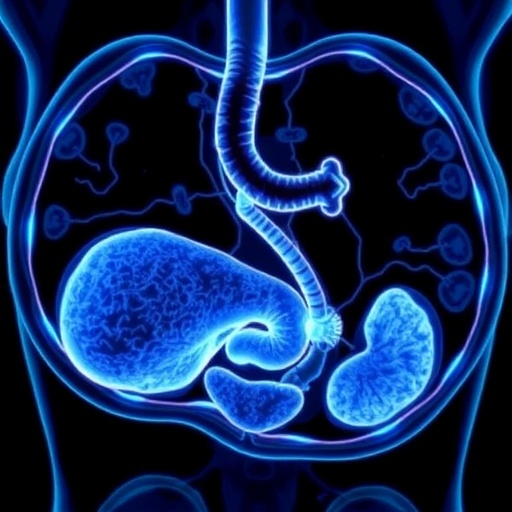
In a groundbreaking exploration into the immunological underpinnings of periodontitis, recent research has illuminated the detrimental role excessive neutrophil extracellular traps, or NETs, play in driving inflammation and subsequent alveolar bone loss. This novel study, conducted by Chen and colleagues and recently published in Genes and Immunity (2025), uncovers a pivotal interaction whereby NETs impede the differentiation of regulatory T cells (Tregs), a cell population essential for maintaining immune homeostasis and preventing excessive tissue destruction in the periodontal niche. Through an intricate combination of in vivo models, transcriptomic profiling, and in vitro co-culture systems, the research illuminates how NETs amplify pathological bone resorption by disrupting immune tolerance mechanisms, thereby opening new avenues for targeted immunotherapy using DNase I to counteract NET-induced damage.
Periodontitis, a chronic inflammatory disease characterized by the destruction of tooth-supporting structures, is increasingly recognized as a complex interplay of host immune responses incited by pathogenic microbial communities. Neutrophils, frontline defenders against bacterial invasion, deploy NETs as a potent antimicrobial strategy—web-like structures composed of DNA, histones, and granular enzymes extruded to trap and neutralize pathogens. However, when NET formation becomes dysregulated or excessive, this formidable defense paradoxically exacerbates local inflammation, perpetuating tissue damage. The present study compellingly demonstrates that in experimental murine periodontitis, NET accumulation correlates strongly with alveolar bone loss, solidifying the notion that NETs are not merely bystanders but active contributors to disease progression.
To dissect the mechanistic impact of NETs in periodontitis, Chen et al. employed a sophisticated murine model in which periodontitis was induced with or without therapeutic depletion of NETs via systemic administration of DNase I, an enzyme known to degrade extracellular DNA networks. Strikingly, NET depletion led to significant attenuation of alveolar bone resorption, revealing that targeting NETs can confer substantial protective effects. These findings suggest that NETs serve as critical drivers of destructive inflammatory cascades in periodontal tissue and imply a potential therapeutic benefit in modulating NET dynamics during disease management.
.adsslot_1FZXrgQuPR{width:728px !important;height:90px !important;}
@media(max-width:1199px){ .adsslot_1FZXrgQuPR{width:468px !important;height:60px !important;}
}
@media(max-width:767px){ .adsslot_1FZXrgQuPR{width:320px !important;height:50px !important;}
}
ADVERTISEMENT
Delving deeper into the immunological consequences of NET dismantling, the researchers conducted RNA sequencing coupled with comprehensive bioinformatics analyses on gingival tissues harvested from these models. This high-resolution transcriptomic profiling unveiled that NET depletion profoundly reorganized immune-related gene expression networks, with a particularly striking impact on pathways governing T cell differentiation. Notably, regulatory T cell-associated transcriptional signatures were enhanced, suggesting NETs normally suppress Treg development within the inflamed periodontal environment. This molecular evidence underscores the hypothesis that NETs subvert immune tolerance by selectively inhibiting Treg lineage commitment.
The critical role of Tregs in mitigating periodontitis cannot be overstated, as these cells orchestrate anti-inflammatory responses and prevent tissue-destructive immunity. Deficiency or functional impairment of Tregs has been linked to severe alveolar bone loss in both clinical and experimental settings. Chen and colleagues elegantly validated their sequencing data by showing that NET inhibition significantly increased the infiltration of Tregs into periodontal tissues, accompanied by elevated expression of key immunosuppressive cytokines such as interleukin-10 (IL-10) and transforming growth factor-beta (TGF-β). These cytokines are well-known effectors of Treg-mediated regulation and are vital for sustaining periodontal tissue integrity amidst chronic microbial insult.
Complementing the in vivo findings, the team ventured into refined in vitro experiments to scrutinize the direct effect of NETs on Treg differentiation from naïve CD4+ T cells. Neutrophils stimulated with lipopolysaccharide (LPS) derived from Porphyromonas gingivalis—a keystone periodontopathogen—were shown to generate copious NETs, which, when co-cultured with naïve T cells, markedly impaired their differentiation into functional Tregs. Intriguingly, the destructive influence of NETs was entirely reversible upon enzymatic NET digestion with DNase I, reinstating the capacity for Treg development. This finding pinpoints NETs as molecular checkpoints that actively sabotage Treg lineage progression during periodontitis.
The interplay between NETs and T cells unveiled here opens a fascinating dimension in immunopathology where extracellular DNA traps not only capture microbes but also manipulate adaptive immune cell fates. Mechanistically, the NETs may sequester critical differentiation signals or present inhibitory molecules that skew T cell differentiation away from regulatory phenotypes. Although the precise molecular constituents mediating this interference remain to be fully elucidated, histone modifications and NET-associated proteases could be prime suspects exerting suppressive effects on Treg lineage commitment.
Therapeutically, these insights herald DNase I as a promising intervention in periodontitis management. By enzymatically dismantling NETs in periodontal tissues, DNase I not only alleviates the physical burden of extracellular chromatin but also restores immunological balance by promoting Treg differentiation and function. This dual mechanism—reducing inflammatory insult and fostering immune regulation—positions DNase I as a targeted strategy that transcends traditional antimicrobial and anti-inflammatory treatments, potentially improving clinical outcomes and preserving alveolar bone.
The broader implications of this research extend beyond periodontitis to other chronic inflammatory and autoimmune diseases where NETs are implicated, including rheumatoid arthritis, systemic lupus erythematosus, and vasculitis. The demonstration that NETs can dictate T cell fate decisions adds a novel conceptual framework for understanding how innate immune components reprogram adaptive immunity in pathologic contexts. Future studies aimed at dissecting the molecular mediators of NET-Treg crosstalk will be integral to developing refined therapeutics that selectively modulate immune subsets without compromising host defense.
Moreover, the study underscores the intricate immune network that governs periodontal tissue homeostasis, where neutrophils, T cells, cytokines, and extracellular traps form a dynamic milieu influencing disease trajectory. The temporal and spatial orchestration of these components determines whether the immune response culminates in protective clearance or destructive inflammation. Unraveling this complexity necessitates integrative approaches combining genomics, proteomics, and advanced imaging, as exemplified by this multi-modal investigation.
From a clinical translation perspective, NET biomarkers in saliva or serum could serve as diagnostic or prognostic tools to identify patients at risk of rapid periodontal deterioration. Monitoring NET levels alongside Treg-associated cytokines may enable personalized therapeutic regimens incorporating DNase I or other NET-modulating agents. Additionally, this approach could synergize with established periodontal therapies, such as mechanical debridement and antimicrobial agents, to enhance disease resolution.
In summary, the seminal work by Chen et al. profoundly advances the understanding of how excessive neutrophil extracellular traps exacerbate periodontitis by derailing regulatory T cell differentiation. By dissecting the mechanistic pathways and demonstrating the therapeutic potential of DNase I, this study provides a compelling paradigm shift in periodontal immunology. It invites the scientific community to reimagine targeting extracellular chromatin as a viable strategy to restore immune equilibrium and halt bone loss, thus promising improved management of a pervasive and debilitating disease.
As the field moves forward, delineating the interplay between NETs and other immune populations such as Th17 cells, B cells, and macrophages will refine our comprehension of periodontal pathogenesis. Furthermore, exploring how microbial factors trigger NET overproduction may unearth novel interventional checkpoints. The convergence of immunology, microbiology, and molecular therapeutics epitomizes the future of personalized periodontal care, driven by deep mechanistic insights such as those unveiled in this pivotal study.
Chen and colleagues’ findings set a new benchmark for investigative rigor and translational relevance in periodontal research, opening the door to innovative, immune-centric interventions. For millions affected by periodontitis worldwide, this research heralds hope for more effective treatment modalities that tackle the disease not only at its microbial origin but at the very core of immune dysregulation.
Subject of Research: The role of neutrophil extracellular traps (NETs) in regulating regulatory T cell (Treg) differentiation and their impact on periodontitis progression.
Article Title: Neutrophil extracellular traps aggravate periodontitis by disturbing regulatory T-cell differentiation.
Article References:
Chen, B., Song, D., Cheng, T. et al. Neutrophil extracellular traps aggravate periodontitis by disturbing regulatory T-cell differentiation. Genes Immun (2025). https://doi.org/10.1038/s41435-025-00350-6
Image Credits: AI Generated
DOI: https://doi.org/10.1038/s41435-025-00350-6
Tags: chronic inflammatory diseases and immune responseDNase I in treating periodontal inflammationexcessive NETs and tissue destructionimmunological mechanisms in periodontal diseaseinflammation and alveolar bone lossmicrobial communities in periodontitisNETs and immune tolerance disruptionneutrophil extracellular traps in periodontitisneutrophil functions in periodontal healthresearch advancements in periodontal therapyrole of Tregs in immune homeostasistargeted immunotherapy for periodontitis





